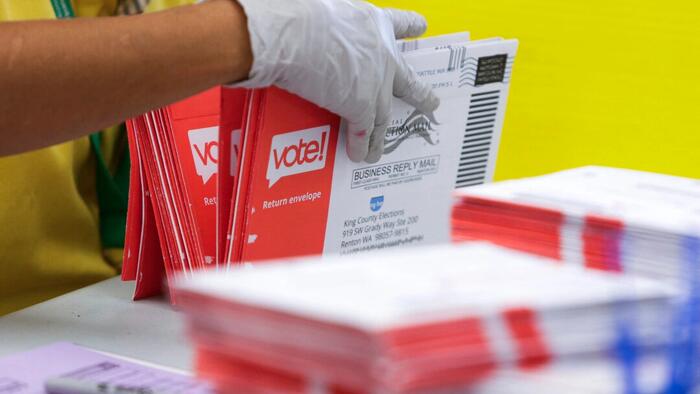As of early October 2023, early voting in the U.S. has already seen significant participation, with nearly 3 million ballots cast either in person or by mail, according to data from the University of Florida’s Election Lab. The exact figure stands at approximately 2,877,590 early voters in states that report this information. Of those ballots, about 504,000 were cast in person, while over 2.37 million were mail-in votes. In light of the upcoming Elections Day, which is less than four weeks away, 47.5 million mail-in ballots have been requested, although this figure pales in comparison to the 92 million requests during the previous presidential election in 2020.
A closer examination of early voting by party affiliation reveals a Democratic lead among early voters, with 56.3%, or 732,378 individuals identifying as such. In contrast, 27.4% were Republicans (356,797 voters), and 16.2% were independents or affiliated with other parties (210,980 voters). This partisan divide may play a significant role in shaping the contest’s dynamic, especially with the electoral strategies of both parties being informed by these early sentiments. Furthermore, demographic analysis indicates that early voting trends predominantly feature older cohorts, with nearly 60% of early voters aged over 65, aligning with a consistent trend of increased participation among seniors.
Demographically, early voting shows a slight gender imbalance with 54.4% of voters being female and approximately 44.6% male. Ethnicity also plays a crucial role in understanding the early voting landscape, highlighting that a substantial 72% of voters identified as white. In contrast, only 8.6% were black, 2.2% Hispanic, and 2.4% Asian, with 14.3% categorized as “unknown.” These demographics lend insight into which groups are engaging with the electoral process ahead of Election Day and potentially illuminate the voter turnout strategies for each party.
In Arizona, early in-person voting commenced on October 9, marking it the first battleground state to enable this option for residents ahead of the elections. The timing of this onset of voting aligns with increased campaign activity in the state, as both major party presidential tickets plan to make campaign stops to galvanize support. Historical data illustrates that Arizona has embraced early voting, with around 80% of the electorate casting ballots prior to Election Day in 2020. The state’s election mechanics include mandatory early voting sites in each of its 15 counties, facilitating accessibility to voters statewide.
North Carolina is currently revising its voting procedures in response to the disruptions caused by Hurricane Helene. The state’s election board rolled out emergency measures for the 13 counties affected, allowing flexibility in early voting site locations, opening times, and hours. Such changes are crucial to maintain voter turnout amidst infrastructure setbacks stemming from the storm, allowing residents to request absentee ballots in person right up until a day before the general election. This dynamic highlights the need for adaptability in electoral processes amid unexpected challenges.
In other states, South Carolina has extended its voter registration deadline to October 14, while Georgia officials assert that they don’t anticipate significant disruptions from the recent storms. Florida is in a similar situation, with Governor Ron DeSantis issuing an executive order that allows local election supervisors in 13 impacted counties to adjust their voting processes based on conditions from Hurricane Helene. As these elections draw nearer, the intertwining of natural events with electoral logistics underscores the importance of local leadership and decision-making in ensuring that every citizen can contribute their vote effectively and efficiently.

